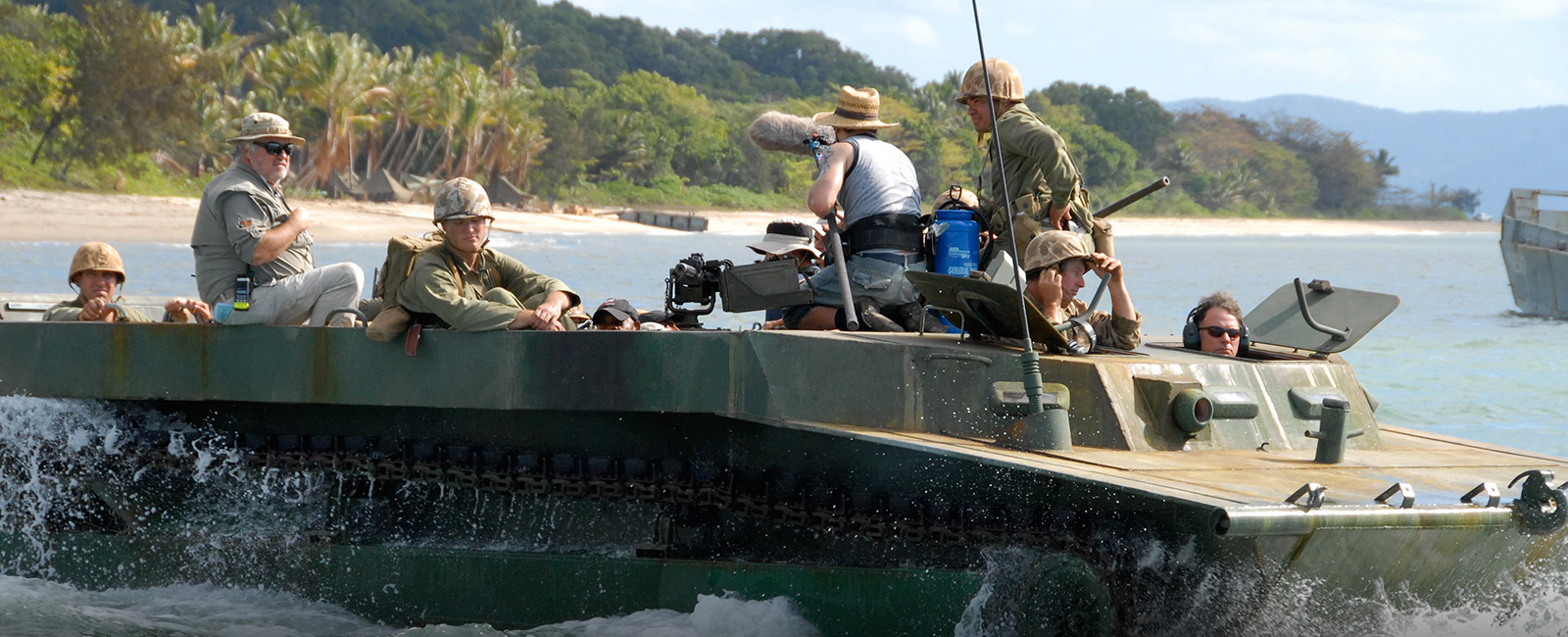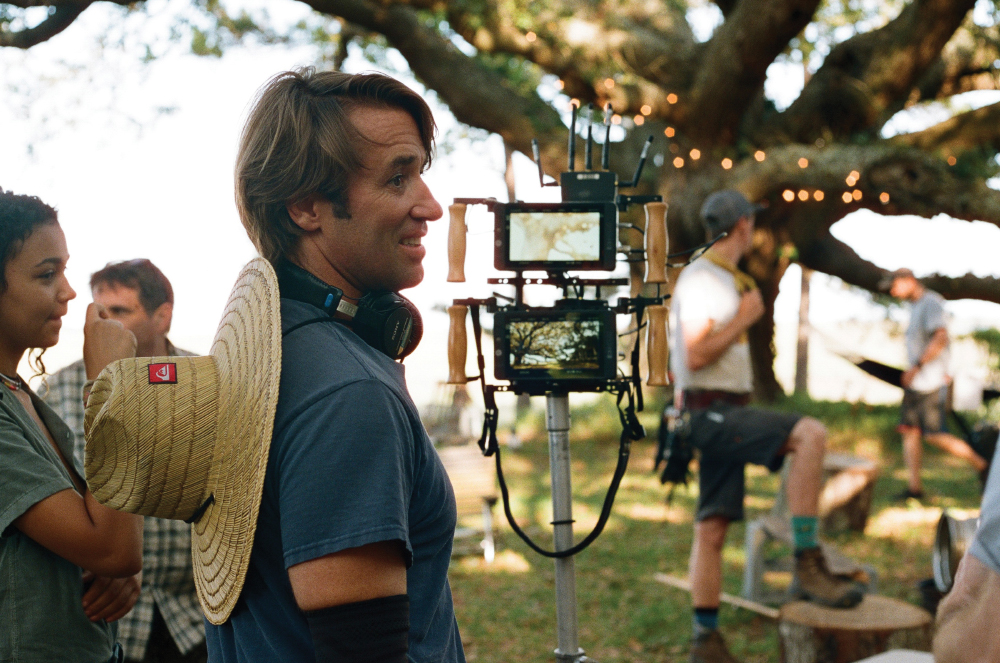
Jonas Pate
Creator / Executive Producer / Direct
Creator / Executive Producer / Director "Outer Banks"
Jonas Pate on working with Lance Julian and working on the water on "Outer Banks".
Jonas Pate on working with Lance Julian and working on the water on "Outer Banks".
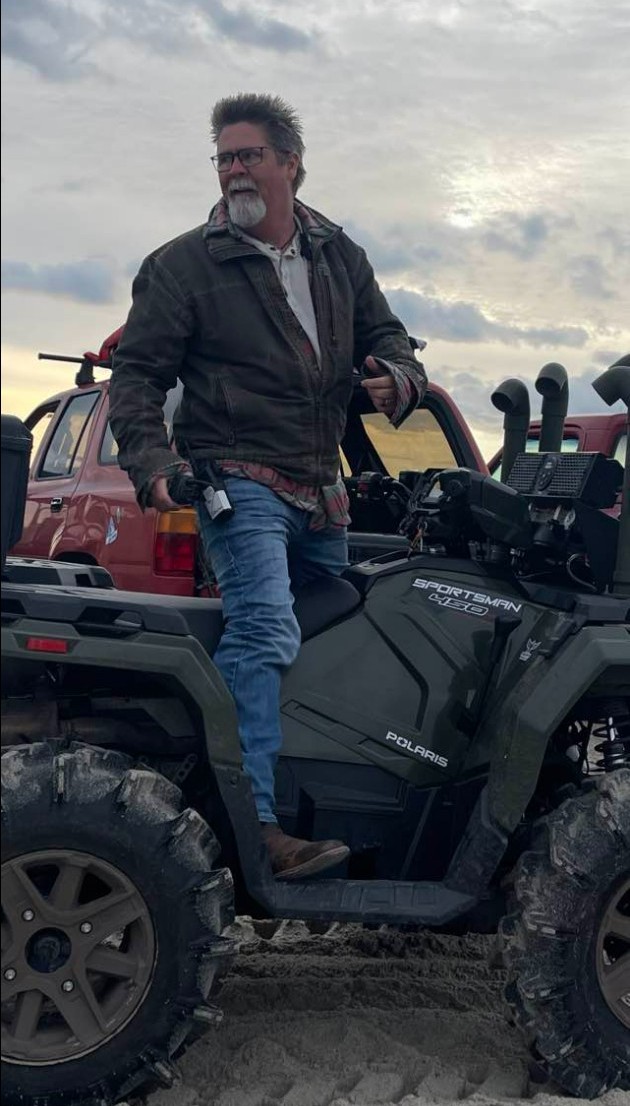
Michael Jefferson
Co-Producer / 1st Assistant Director
Co-Producer / 1st Assistant Director "Outer Banks"
Michael Jefferson on working with Lance Julian and Nick Spetsiotis on NETFLIX's "Outer Banks". "You two are seriously the best in the Biz! Cannot express the love and respect that you have from this entire crew. OBX would never have been what it is without you and your team".
Michael Jefferson on working with Lance Julian and Nick Spetsiotis on NETFLIX's "Outer Banks". "You two are seriously the best in the Biz! Cannot express the love and respect that you have from this entire crew. OBX would never have been what it is without you and your team".
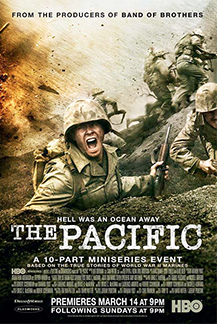
Toby Pease
1st Assistant Director 'The Pacific'
1st Assistant Director 'The Pacific' 'Fool's Gold', 'The Thin Red Line', 'Titanic'
During filming of HBO's 'The Pacific', Toby Pease, a well-respected 1st Assistant Director, comments about Marine Team's efforts in the re-creation of the WWII Pacific Theatre amphibious assaults and beach landings on Guadalcanal, Palely and Pavuvu.
During filming of HBO's 'The Pacific', Toby Pease, a well-respected 1st Assistant Director, comments about Marine Team's efforts in the re-creation of the WWII Pacific Theatre amphibious assaults and beach landings on Guadalcanal, Palely and Pavuvu.
Lance and Harry,
The last week was so busy that I never stopped to even think that it was coming to an end. I honestly feel a real sadness now to leave that sequence behind. I felt like we did such justice in portraying the hell that those young boys must have gone through.
Anyway, I just wanted to put on paper how enormous my respect is for the work that you do. It was magnificent to see that fleet of landing craft surge through the water. And it was extraordinary that your team never gave up in keeping those antiquated machines running. You run such a great operation on the water - it's an absolute gift to a 1st Asst Director, because you know exactly how to make it all work for the cameras. Water work should be difficult, but you guys make it so manageable and user-friendly.
Thank you again to all your team for such a great effort. I would not dream of taking a film near the water without you.
Good luck with the Colossus shoot.
Toby
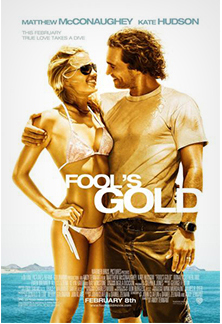
Donald De Line
Producer "Fool's Gold"
Producer "Fool's Gold"
We had an amazing Marine Coordinator named Lance Julian.
We had an amazing Marine Coordinator named Lance Julian.
"I think the biggest challenge in moviemaking is filming on the water so that was a major concern. You can spend lots of time planning everything, but in the end you're at the mercy of the elements and things don't always go right. We were shooting from boat to boat, from air to boats, from land to boats…every variation you could think of. Everything has to be carefully choreographed. Luckily, we had an amazing marine coordinator named Lance Julian."
Lance Julian was responsible for gathering the flotilla of boats used in the production, including the few seen on camera, as well as the dozens more that were utilized as Camera Boats, transport boats and dive boats. One of the most important finds was the 140-foot yacht that doubled as Nigel Honeycutt's luxurious Precious Gem. The right ship was ultimately found in Fiji, and Charles Wood [Production Designer] says it fit the bill perfectly.
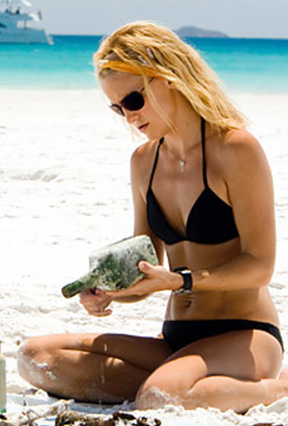
Kate Hudson
Actress "Fool's Gold"
Actress "Fool's Gold"
Talks about her first diving experience under the instruction of Marine Team Dive Crew
Talks about her first diving experience under the instruction of Marine Team Dive Crew
"It was a great bonding experience for the actors because we all got to dive together, which was pretty cool. It's one of those situations where you have to learn to trust one another in an environment where you really need to trust somebody the most"..."I thought it was going to be easier than it was," Hudson admits. "When I had my first real dive, I was terrified to get into the water, but the marine crew and all the dive masters were amazing. And once you get down there, it's just incredible. I mean, to be able to do my first dive on the Great Barrier Reef is mind-blowing. The sea life in phenomenal. It was like being in a whole other world. Now I'm in love with diving; I can't wait to get back in the water."

Paul Deason
Co-Producer - 13 Days
Co-Producer - 13 Days
Marine Team has had the pleasure of working with Paul Deason on more than one occasion, for both "Amistad" and "Thirteen Days".
Marine Team has had the pleasure of working with Paul Deason on more than one occasion, for both "Amistad" and "Thirteen Days".
Dear Lance,
No one knows better than I that the success of any operation is never due to the efforts of one individual, but to the combined efforts of the group. So I'm writing this letter to you, but it is rightfully to the entire Marine Team.
And seldom has the term "team" been so correctly accorded to an organization. Your group is clearly not a collection of individuals with a common goal, but rather a smoothly functioning organization of people who have worked together before and who know their roles so well that actions of several people happen as if they were one organism. The missteps avoided, the speed attained and the benefit to the production are incalculable.
So I would like to add my thanks and appreciation for such a successful conclusion to the maritime part of "Thirteen Days". On budget and ahead of schedule are always appreciated, but to have all the Director's goals so admirably met while attaining these two worthy pluses is indeed a wonderful conclusion to the Principal Photography of this film. We have ended on quite a high note, and it is largely due to the combined efforts of the Marine Team.
On a personal note I must congratulate you on your family's abilities. Surely there is a black sheep somewhere who is merely a normal human being? One who requires more than four hours sleep at night? One who would complain bitterly at spending 16hours in the cold rain on a bouncing boat and facing a wet spray? No? Ah, well…maybe it's the New Zealand water….
So thanks again to the Marine Team. "Amistad" and now "Thirteen Days" are two sets of memories I will heartily treasure.
Sincerely,
Paul Deason
Co-Producer
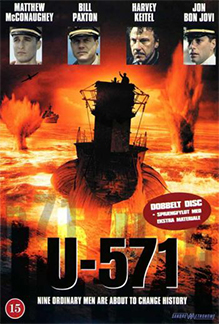
Jonathan Mostow
Director - U571
Director - U571
This interview with director Jonathan Mostow goes into detail about the many factors involved in filming on the water.
This interview with director Jonathan Mostow goes into detail about the many factors involved in filming on the water.
U571
Submerged with Director Jonathan Mostow After all the well-publicized problems encountered by the filmmakers of such recent sea-based epics as Titanic, The Beach and Waterworld, you'd expect any sane director to run screaming from the task of shooting another nautical saga. Not director Jonathan Mostow, however. Following his 1997 thriller Breakdown, Mostow eagerly turned his attention to World War II submarines. The result is U571, a taut suspense-drama about an American submarine crew's battle against time while carrying out a daring mission to capture a top-secret encrypting device from a Nazi U-boat. Featuring an ensemble stellar cast headed by Matthew McConaughey (A Time to Kill), Bill Paxton (A Simple Plan), Harvey Keitel (Pulp Fiction), Jon Bon Jovi (Moonlight & Valentino), Jake Weber (Meet Joe Black) and David Keith (Indian in the Cupboard), U571 was co-written by Mostow, who spoke with Film & Video’s Iain Blair about the challenges of making the film, shooting on location in Malta and Italy, and why he’d do it all over again. You certainly didn’t make it easy for yourself, shooting a period piece that’s also set at sea. Didn’t Jim Cameron warn you? (Laughs) A long time ago I pitched an idea to Steven Spielberg, and I was with a friend who’d actually written Waterworld, and I’ll never forget Steven saying, ‘Whatever you do, never shoot on water. I did Jaws. Trust me, it’s a nightmare!’ That advice really stuck with me, but I guess I forgot. Ironically, we were all so terrified of shooting on water that we were so well prepared that we actually came in on schedule on all the water stuff. And the credit goes to Lance Julian, the marine coordinator. We were shooting at sea for 10 weeks. We had 350 in the crew. We had a full-sized, 212-foot, 600-ton sub we’d built from scratch. We also built two full-sized submarine replicas on the island of Malta where we shot all the film’s exterior scenes, and we also had a 5,000-ton destroyer that we completely redressed and refitted with all sorts of guns. We also specially built support craft as we needed boats that could do some unique tasks. So we had all this incredible one-of-a-kind technology on the water, and it went like clockwork because of Julian. He’d worked on Amistad, Waterworld, and Titanic. He’s like the Einstein of marine coordination. We didn’t have one accident or run even one day behind schedule. And it’s just so much more fun to be shooting out on the ocean than in a dark soundstage. This was a very ambitious project to take on. What was the initial appeal for you? It came about out of left field, I suspect like so many films. I was in San Francisco scouting locations for The Game, which David Fincher ended up doing while I went off to do Breakdown and I took this tour of a World War II submarine. That got me thinking, I want to write and make a World War II sub movie, so I went to the library, and the more I read, the more I couldn’t believe the accounts of what had happened. It was just amazing material. In fact, if you’d put some of this stuff in a screenplay you’d probably get a note back from the studio saying ‘This is unrealistic — it’s too Hollywood.’ How much research did you do in the end? I spent several years in between doing other things visiting battleships and submarines, touring war museums, talking to veterans and reading everything written about submarine warfare. I kept researching up until — and even during — the shoot as I found it all so fascinating, probably over five years in all. The truth is, in one sense I didn’t want to make the film because I’d have no excuse anymore to just keep researching it. How long did you spend developing the script? It was written in fits and starts. I’d do a draft and then start over again, and I did several over a few years that I never even showed to anyone. The obstacle was that while I could understand technically all the action and the adventure and suspense of it all, I could not come to grips with these people who had the unbelievable courage to get inside these tin sardine cans that were either boiling hot or freezing cold and extremely claustrophobic, and go to sea — let alone go into battle, let alone get depth-charged. What kinds of people were they? And the interesting thing about submarines, and it’s still true today, is that it’s a volunteer duty, even in the middle of war. That’s because you can’t afford to have anyone there who absolutely doesn’t want to be there. This was tough living and I find it inspiring that people went to war in these tin sardine cans with half-inch thick steel pressure hulls that creaked and groaned, and if you went too deep, they would just crush like egg shells. Preproduction must have been a monster? It was. We spent about 18 months, and over a year was spent just building the full-size sub we use. When we got the blueprint drawings for it, that bill alone was over $300,000. That gives you a sense of what we took on. It had to be seaworthy, safe and insurable, and able to engage in all the sea battles we were staging. It was under the coordination of Lance Julian and our production design department, and that was a major element. Then we chose Malta for various reasons; it had the two enormous outdoor tanks at the MFS Film Studios where numerous films set at sea had previously been shot. And being an island, it also gave us both calmer and rougher water, depending where you filmed. They also had huge shipbuilding capabilities and we needed to do a lot of that. Then all the interior scenes were filmed in Rome on Cinecitta Studios’ largest soundstage, and to help with authenticity, we had two really good production designers — Geotz Weidner (Das Boot) to design the German sets, and William Ladd Skinner (On Deadly Ground) to handle the American side. In addition, technical advisor Patrick Hannifin, a retired Vice Admiral who served in the U.S. Navy during World War II and operated submarines for almost 35 years, lended his expertise. So I knew we were getting all the details right. How daunting was it dealing with such a complex production, a big budget and a huge cast and crew shooting on the other side of the world? I never get too excited and I never get too scared, hopefully. I worry more about if the film is going to be good or not, as it has my name on it. To be honest, when I did a $1-million film, the pressures were far greater in a way as the producers had mortgaged their homes to finance it and I’d see them every day. Of course, I want the studio to make money, but you don’t sense the pain as much. I’m happy to say that we actually came in under budget which shows just how well prepared we all were. Cinematographer Oliver Wood, whose credits include Face-Off and Die Hard II, shot this. How did you work together and just how hard was the shoot? It’s interesting because this film is a combination of extremes. All the interiors are incredibly small and claustrophobic, and we lit them with pepper lights, these tiny 150 watt lights. Then the exteriors are huge and limitless, and the scope is gigantic with miles of open ocean, so for all the night shoots we had to use these enormous Musco light packages. Similarly, in our approach to filming, when you’re dealing with 350 crew on the water with massive boats, changing weather and sea conditions, every shot had to be planned out to the minutest detail. So we storyboarded everything, and analyzed and discussed every shot and angle, almost ad nauseam. By contrast, we realized that all the interiors couldn’t be planned. We had to leave scenes open enough to keep some spontaneity, and I wanted the camerawork to be cinematically organic to the storytelling. I don’t like to see tons of fancy shots in a film like this, because I feel they just get in the way and don’t serve the story. So every day we’d make it up as we went along for all the interior scenes, and that was also necessary as when you’re shooting in a very confined space you find you quickly run out of ideas. So how do you keep it new and fresh? Luckily we had a huge asset in having one of the world’s greatest camera operators and his focus puller. They’ve been working together for 10 years, and we were able to do very complex handheld photography with long lenses where focus is absolutely critical. We were whip-panning around and actors were running in and out of shot and the camera was moving around, and to keep all that in focus is such a challenge. But these guys were so talented that they allowed me to get shots I probably couldn’t have done otherwise. The film also has some great effects in it, most of which seemed practical rather than computerized. My basic philosophy about visual effects is simple; when you can and it’s cost-effective, always do it for real. For me, CG is not quite there yet. You can do some amazing things with computers, and I think they’re really good for enhancing and fixing shots, but I’m not completely sold yet on CGI in movies that have to be hyper realistic, such as this one. Any shot that seems kind of fake will stand out, which is why we built the full-size sub. Even the miniatures were built quarter scale, which in our case means they were still quite huge. The visual effects broke down into two categories. The visual effects supervisor was Peter Donen, and his area was basically all the miniatures and any sort of CG enhancement to either our first unit, second unit or miniature photography. And then we also had many giant mechanical effects, and those were all under the domain of Allen Hall, a two-time Oscar winner — he won for his work on Forrest Gump — and one of the best in the business. So he did all the explosions and riggings. For instance, we built a gimbal the size of a large building — and it operated completely silently. We built that in Rome and the studio actually let us dig a 40-foot deep, 200-foot long, 100-foot wide pit in the soundstage. Then we built the gimbal in that tank so we could flood it and have the gimbal under water with the sets submerged. We used that for all the violent depth charge scenes, and Allen Hall also created for us [an enormous] rainstorm which we did in the outdoor tank in Malta. That again was a massive undertaking and it used over 15,000 gallons of water a minute pumping over the set. We had to run giant lines down to the sea in the end to get enough water to cover the tank which is huge, and we then had to have all these big cranes that could put the rain exactly where we wanted. It must have been a shock to sit down in a quiet edit room? Like everything in this film it was another case of extremes, going from this huge shoot back to one room. But I loved working with editor Wayne Wahrman, who did A Civil Action. We spent a good seven months on post, and a lot of that was waiting for all the miniature shots. Peter Donen ran everything in house, and then we’d bid out to certain vendors for different shots. For instance, we went to Illusion Arts to do some of the more complex shots needing CGI work, and then we’d do wire removal at another house. But Peter oversaw it all, so it wasn’t like just going to an ILM and handing it all over. Is it a film for men? That’s a great question because I would have said ‘Absolutely,’ and clearly men enjoy it. The complete surprise was that when we tested it, our highest scores came from women over 30. That was a shock. But every time you do a movie there’s some big surprise. Your job as a filmmaker is to try and anticipate how the audience is going to react, but they always surprise you. What do you want audiences to take away with them? Out of my own respect and awe for the men who served in submarines, I wanted to create for the audience the visceral experience of what it was really like. Obviously it’s not a documentary, but I want audiences to experience it rather than just see it, and walk away going, ‘Wow! I can’t believe people did that.’ I also want them to come away with some sense of the strategic issues involved. And I wanted to show audiences how young men in these hard conditions rose above their fears to accomplish incredible feats of heroism. I look at my friends and myself and I can’t see us taking these kinds of risks. That’s what was so inspiring.
Simon Wincer
Director - The Phantom
Director - The Phantom
Great praise on the organization and efficiency of the marine units from director Simon Wincer.
Great praise on the organization and efficiency of the marine units from director Simon Wincer.
Dear Lance,
Many thanks for the great job you did on "The Phantom". I know "Cutthroat Island" was a good rehearsal but none the less the marine units work was extremely well-organized and efficient. As you know we picked up one day on our schedule during our water work - usually it's the other way around - time is lost when working on the water. You and I both know that there was more bullshit flying about "Waterworld" and working on the water and the studio was snowballed into believing that all their problems were caused by it. If people know about boats and the ocean -- it isn't that hard. You understand this and it paid off for us on "The Phantom".
I look forward to working with you again one day. In the meantime, have a great Christmas and New Year.
Warm Regards,
Simon Wincer

Jane Barteleme
Associate Producer - Cutthroat Island
Associate Producer - Cutthroat Island
Accolades resound from the Associate Producer of Cutthroat Productions N.V.
Accolades resound from the Associate Producer of Cutthroat Productions N.V.
Dear Lance,
What can I say? You did more than any of us ever imagined possible. You made what should have been a nightmare a dream. Well almost a dream ... I can't thank you enough for all the hard work but particularly the good humour throughout it all.
You have got to be the best there is!! Love to you, Sharon and Harry Jr.
Sincerely,
Jane

